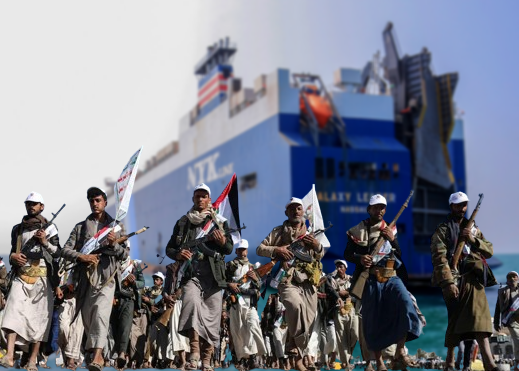
- The Houthi movement is a complex player in the broader geopolitical landscape, with its actions shaping not only the dynamics within Yemen but also influencing regional security and stability.
- The allegations of Iran’s involvement in planning and executing Houthi missile and drone attacks continue to be a contentious issue, with Iran denying any such role.
- The Houthis attacking ships in the Red Sea and launching drones and missiles at Israel has raised concerns about the security of vital sea lanes and escalated tensions in the region.
The Houthi movement, officially known as Ansar Allah, has its roots in the late 1990s when the Houthi family established a religious revival movement for the Zaydi sect of Shi’ite Islam in the far north of Yemen. The Zaydi sect had historical significance as rulers of Yemen but had faced marginalization and impoverishment in their northern heartland. As tensions with the government escalated, the Houthis engaged in a series of guerrilla wars with the national army and even had a brief border conflict with Sunni powerhouse Saudi Arabia.
The turning point for the Houthi movement came during the Yemen war that commenced in late 2014. Seizing control of the capital, Sanaa, the Houthis’ power expanded, prompting Saudi Arabia to intervene in 2015 at the helm of a Western-backed coalition to support the Yemeni government. The conflict resulted in the division of Yemen, with the Houthis establishing control over significant portions, while the internationally recognized government based itself in Aden.
In recent years, the Houthi movement has garnered attention for its regional role, particularly in the Middle East. Their involvement in attacking shipping in the Red Sea and launching drones and missiles at Israel has raised concerns about the security of vital sea lanes and escalated tensions in the region. The Houthi movement, aligned with Iran, has been likened to other Iran-backed groups such as Hezbollah in Lebanon and Iraqi militias targeting U.S. interests in Iraq and Syria.
The Houthi arsenal includes ballistic missiles and armed drones with a formidable range, showcasing their capabilities during the Yemen war. These weapons, including the Tofan, Borkan, and Quds missiles, bear similarities to Iranian models. Despite the accusations from the United States and the Saudi-led coalition, the Houthis deny being a direct Iranian proxy, asserting their independence in developing weapons.
The Houthi movement’s slogan, “Death to America, Death to Israel, curse the Jews and victory to Islam,” underscores their anti-Western and anti-Israel stance. The recent threats to target all ships heading to Israel, irrespective of nationality, have further escalated tensions in the Red Sea.
Amid these developments, the United States, led by Defense Secretary Lloyd Austin, announced the creation of a multinational operation to safeguard commerce in the Red Sea in response to the Houthi attacks. The allegations of Iran’s involvement in planning and executing Houthi missile and drone attacks continue to be a contentious issue, with Iran denying any such role.
As the situation unfolds, the Houthi movement remains a complex player in the broader geopolitical landscape, with its actions shaping not only the dynamics within Yemen but also influencing regional security and stability.
In conclusion, the Houthi movement’s trajectory from a local religious revival to a regional player has far-reaching implications for Middle East stability. The complexities of historical grievances, sectarian dynamics, and geopolitical rivalries underscore the need for nuanced approaches in addressing the multifaceted challenges posed by the Houthi movement, both within Yemen and in the broader regional context.
(Srijan Kumar is currently pursuing a PhD in South Asian studies from Delhi University. He is a writer and a columnist for various digital media houses. Opinions expressed are the author’s own)
